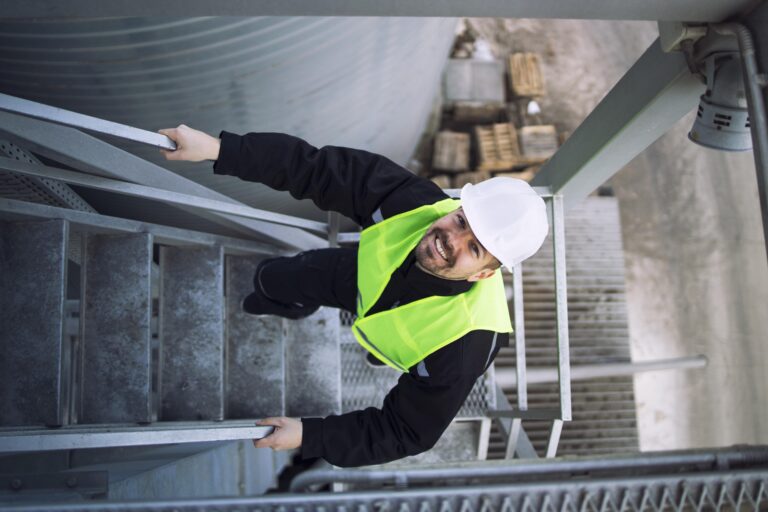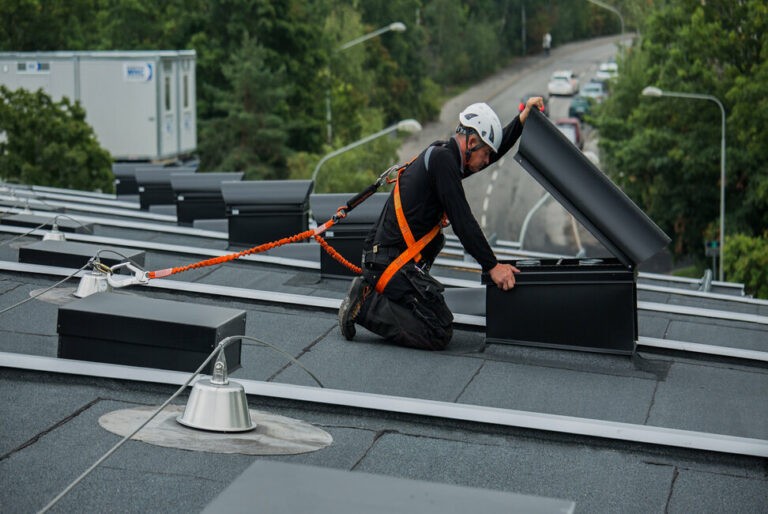We can’t stop falls, but we can prevent them. Safety elements must be there when a worker is working at a certain height. Building owners should ensure their workers’ safety to avoid any further penalties. So, as we have mentioned, safety is vital for workers who work on roofs or close to unsafe edges. Serious injuries or even death can result from falls. For this sole purpose, you must have robust lifeline fall protection solutions for your structure. Our lifelines are one of the most crucial safety devices. It will indeed protect them from falls.
Now, you must explore the different Lifeline Fall Protection systems. You will learn how they work, their operation, and their importance. If you read this blog, you are all covered. At US Fall Protection, our goal is to provide reliable and efficient lifeline systems. In this way, workers can work without worrying about their safety. Lifeline systems are among the most valuable tools in our product line. They work with other safety barriers to provide an all-encompassing protection system.
Ensuring Unmatched Safety at Heights
When working at heights, a lifeline system is a safety tool that helps avoid falls or lessen their damage. It includes an anchor point-attached cable, rope, or track. Workers can move about safely while working. They are attached to this line by a harness or lanyard. The lifeline fall protection keeps workers from plummeting to the ground in the event that they slip or fall, preventing major injuries.
Further, Industrial facilities, roofing companies, building sites, and other locations where workers are exposed to unstable conditions often use lifeline systems. These devices make it easier for them to move around freely and do their duties effectively. Using our devices means they don’t have to worry about falling all the time. So, grab these gadgets now for your structure. It will indeed be the best time for this transition.
A Rich Selection of Variations
Different lifeline fall protection types are available here. Each type is made to meet your safety needs. Workers should know how to use these systems. In this way, they can work better. Let’s learn more about these types in detail.
Horizontal Lifelines
A horizontal lifeline system is put in place horizontally along a scaffold or roof. Workers can travel along the lifeline as they work by fastening their harnesses. This kind of system is perfect for operations that require them to go from one end of a building to another.
No matter where they move, a worker using a horizontal lifeline system is always attached to the line for ongoing protection. This guarantees their safety during the entire task. US Fall Protection offers prime worker protection with horizontal lifeline systems. We create them to meet all your safety needs and industry standards.
Vertical Lifelines
Systems known as vertical lifelines are used when workers must climb or descend. As workers ascend ladders, poles, or large structures, they are fastened to the lifeline. It runs vertically along them. The vertical lifeline fall protection prevents workers from falling and keeps them safe if they lose their grasp or slip.
These devices are often used in firms where workers climb industrial equipment, towers, or chimneys. A vertical lifeline is a vital safety device. It is vital because falls from such heights can be deadly. Our vertical lifeline systems at US Fall Protection are built to offer the highest level of security and dependability. It enables workers to ascend with confidence. Basically, our systems give workers eternal morale, which makes their work more rapid and effective. If you use our devices, the workers will work in a better way. They will work freely without fear of falling.
Temporary Lifeline Fall Protection Systems
Temporary lifeline systems are used for short-term projects, where you can’t use permanent ones. After completing the task, these systems can be easily removed from the place. Temporary lifelines are widely used in building projects where the layout of the worksite changes regularly.
Further, these systems are adaptable. You can use them on platforms, scaffolds, or roofs, among other places. Though they offer greater flexibility, they are made to provide the same level of security as permanent systems. US Fall Protection offers simple-to-install temporary lifeline systems. They are adaptable to different types of work sites. It ensures worker safety during brief projects.
Permanent Lifeline Systems
Permanent lifeline systems are built in locations where there is a constant risk of falls. You can place them on rooftops, factories, or massive warehouses. These solutions are made to last a long time. It continuously protects employees who perform height-related tasks.
Further, permanent lifeline systems provide long-lasting fall protection with little maintenance once installed. They are perfect for sectors of the economy where workers must regularly maintain or examine high-rise structures. Permanent lifeline systems are made to last. They are also made to adhere to the most rigid safety regulations. We guarantee the safety at any place.
Retractable Lifeline Systems
Self-retracting lifelines is another name for retractable lifeline systems. They are made to stretch and retract when a worker moves automatically. With the help of this solution, workers can move around more freely while staying securely linked to the lifeline. The retractable lifeline will swiftly latch in place to stop the worker from falling. They are helpful when workers must move around as the system adjusts to their movements. It offers them greater freedom without losing safety. These of the highest caliber, easy to use, and long-lasting are what we offer. It keeps the workers safe while they are doing their jobs.
Safety Barriers Are Important in Lifeline Systems
Safety barriers are just as crucial as lifeline systems for workplace safety. Similar to guardrails and safety nets, Safety Barriers offer an extra layer of protection. They form a comprehensive fall protection system that greatly lowers the chance of accidents when combined with lifeline systems. For example, guardrails can be erected around elevated platforms or rooftops to stop employees from inadvertently walking over the edge. Together, these safety and lifeline systems offer continuous fall prevention. The lifeline system will keep workers from striking the ground if they trip or fall, and the safety barrier will stop the fall.



